calsfoundation@cals.org
Helen Spence (1912–1934)
Helen Ruth Spence of Arkansas County was a famous outlaw and prisoner whose story captured the imaginations of many during her life and engendered a body of legend afterward. She was the focus of unprecedented media coverage in her day, up until her death at the hands of Arkansas prison officials.
The July 12, 1934, issues of the Washington Post and New York Times published accounts of Spence’s death on the previous day. The date of her birth aboard a houseboat on the White River near St. Charles (Arkansas County) was listed by the funeral home as February 23, 1912. Arkansas’s houseboat-dwelling “river rats” were eventually expelled from the area as the U.S. Army Corps of Engineers tamed the White River.
Regarded with a mixture of awe and disdain by the “dry-landers” with whom she attended school, Spence gained only a ninth-grade education and married local-boy-turned-moonshiner Buster Eaton. The marriage did not last, and she returned to the White River to live with her father, Cicero Spence, and stepmother (her mother had died years before). During a fishing trip, a man named Jack Worls shot and killed Cicero and assaulted Spence’s stepmother, who died in a Memphis, Tennessee, hospital on January 7, 1931.
At Worls’s murder trial in DeWitt (Arkansas County), Spence meted out what the locals called “river justice.” According to the New York Times article published on January 20, 1931 (“Girl Kills Alleged Slayer of Father in Court; Fires as Arkansas Jury is About to Get Case”), the action happened as follows: “Drawing a pistol as the jury rose to decide the fate of the man on trial, Mrs. Ruth Spence Eaton, 18, shot and killed Jack Worls…the only statement the girl would make after the shooting was: ‘He killed my daddy.’ She showed no remorse.” This act culminated in Spence’s conviction for manslaughter on October 8, 1932. Due to a wave of public sympathy, however, she was paroled and freed on June 10, 1933.
Prior to her conviction, Spence had worked at a DeWitt café and encountered a man named Jim Bohots. He allegedly began harassing Spence with unwanted advances and threatening her. In February 1932, Bohots was found dead in a “trysting spot” in the woods, shot with his own gun. Called in for questioning, Spence denied involvement and was released. State Prosecuting Attorney George Hartje, in a letter dated May 31, 1933, had assured the parole board that he was “thoroughly convinced she did not [kill Jim Bohots],” so when Spence reportedly walked into a Little Rock (Pulaski County) police station and confessed to the crime, a backlash began against the recently pardoned Spence.
The brief period between Spence’s parole and her return to prison was described in the Arkansas Gazette as a time when Spence was living in Little Rock under an assumed name. However, prison records include a parole document signed by wealthy landowner W. B. Graham of Lonoke County. Graham, who served during the 1930s as president of the Lonoke County school board; he put up $1,000 for Spence’s parole. Residents of the area surrounding the site of Arkansas’s women’s prison note a historical practice of “debt peonage,” in which farmers and plantation owners could acquire a female prisoner. There is reason to believe that, rather than living in Little Rock under an assumed name and confessing to a crime of which she was no longer suspected, Spence sought to escape debt peonage (or “debt concubinage”) and fled from Graham. Placing her trust in local officials, Spence was instead promptly sent to the prison farm.
Sentenced to the State Farm for Women in Jacksonville (Pulaski County) for second-degree murder, she began her sentence—ten years of hard labor—on July 3, 1933. She also began a series of daring escapes, the first of which occurred in the fall of that year. The matron of the women’s prison routinely transported female prisoners to Memphis to be prostituted. Spence, a proficient seamstress, secretly collected red-checked cloth napkins from the cafeteria and sewed them into the lining of her uniform. Upon arrival in Memphis, she requested to use the restroom. Turning her uniform inside out, Spence simply walked away from the bus station, though she was quickly recaptured.
From September to November 1933, Spence escaped a total of three times, only to be caught and punished by twenty lashes with a leather strap known as the “blacksnake.” This method involved stripping a prisoner naked and placing the prisoner over a wooden barrel to be whipped. Afterward, Spence contracted a fever, perhaps due to kidney problems resulting from the beatings. Records show that the petite, five-foot-tall woman was subjected to a round-the-clock series of “high enemas with a colon tube,” followed by repeated douches and alternating doses of morphine—a pattern of treatment that was, even by the standards of the time, excessive and which was already out of fashion. Even when her fever dropped below ninety-nine degrees, this ordeal continued for days.
In December 1933, Arkansas’s lieutenant governor, Lee Cazort, ordered Spence to the Arkansas State Hospital for “observation.” The hospital director concluded that Spence was not insane and should be returned to prison. However, she was held at the asylum for an additional month. During this period, Spence submitted a story to the publication Liberty Magazine, but it was rejected. The prosecuting attorney’s office confiscated Spence’s story. Upon her final escape from prison, it was reported she had written on the magazine’s rejection slip: “I will not be taken alive.”
Spence escaped from a specially constructed “cage-like cell” on July 10, 1934. Assistant Prison Superintendent V. O. Brockman and prison trusty Frank Martin (himself a convicted murderer) came upon her as she walked down a country road. Martin shot Spence behind the ear, killing her instantly. Brockman was charged with being an accessory to murder for purposely allowing Spence to escape. Brockman was acquitted but lost his position as assistant superintendent. Martin was also acquitted of her murder and eventually paroled.
Newspapers ran wild, with headlines like “Escaped Girl Convict is Trapped and Slain.” According to newspaper accounts, hundreds of people appeared at the funeral home to see her remains, and she was buried at St. Charles next to her father. However, local legend holds that a young man named John Black led a group who broke into the funeral home during the night before the planned interment and took Spence’s body, which they buried in an unmarked grave in St. Charles. Black reportedly planted a cedar tree to mark the spot. For decades, Black tended the secret grave. Before he died, he entrusted this task to their mutual childhood friend, Lemuel Cressie (L. C.) Brown. According to Brown, after parolee Frank Martin later returned to DeWitt and bragged about killing Spence, he “walked into the grocery store to buy a loaf of bread. The lady sold him a different loaf—told him it was just as good, and cost less. Frank Martin ate dinner that night and never woke up the next morning…It was always said that ‘the River got him.’”
For additional information:
“Arkansas Girl Convict Killed as a Fugitive; Slayer of Two Said She Would Not Be Taken.” New York Times, July 12, 1934, p. 38.
Conine, Bill. “A Murder in the Arkansas County Courthouse.” Grand Prairie Historical Society Bulletin 47 (October 2004): 2–16.
“Girl Kills Alleged Slayer of Father in Court; Fires as Arkansas Jury Is About to Get Case.” New York Times, January 20, 1931, p. 1.
Harris, Jim. “The River People.” Arkansas Times, August 17, 2006, 14–17.
Parkinson, Denise. “Auld Lang Syne: A Decades-Old Promise Is Kept and Justice Sought for a Tragic Figure in Arkansas History.” Hot Springs Life & Home (December 2010): 23–24.
———. Daughter of the White River: Depression-Era Treachery & Vengeance in the Arkansas Delta. Charleston, SC: The History Press, 2013.
Denise Parkinson
Hot Springs, Arkansas
 Early Twentieth Century, 1901 through 1940
Early Twentieth Century, 1901 through 1940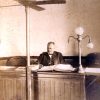 Law
Law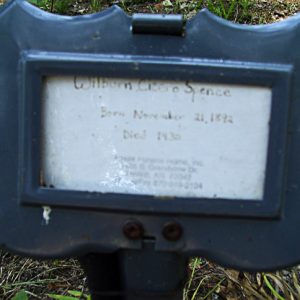 Cicero Spence Grave
Cicero Spence Grave 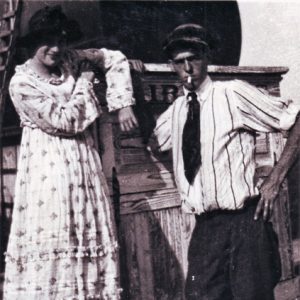 Helen Spence and Buster Eaton
Helen Spence and Buster Eaton 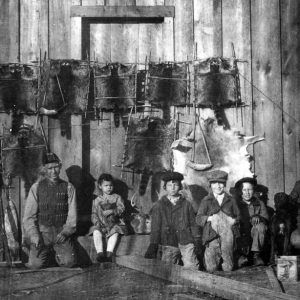 Cicero and Helen Spence
Cicero and Helen Spence 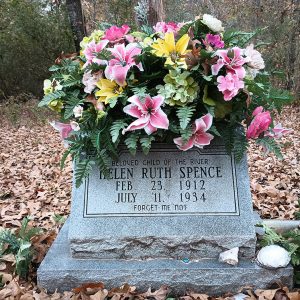 Helen Spence Gravesite
Helen Spence Gravesite 



Just heard about her on Forgotten Faces on YouTube. Her life was full of men who were evil. She was a very strong woman in difficult times.